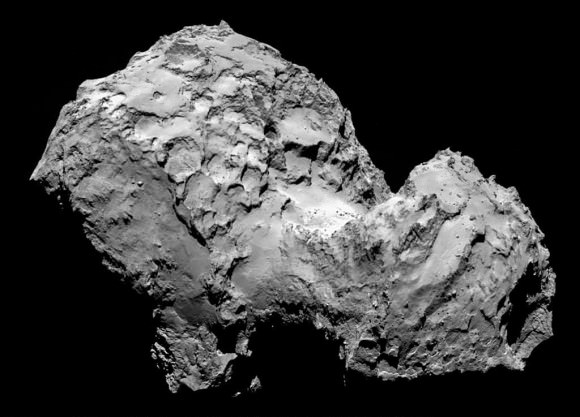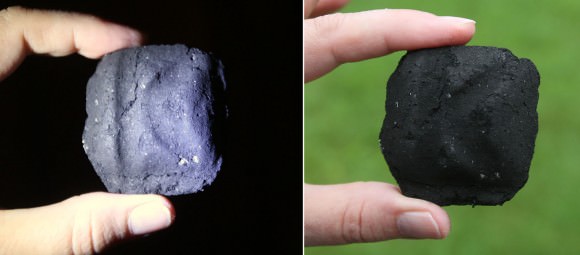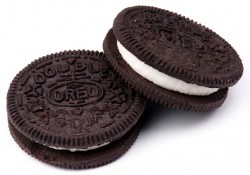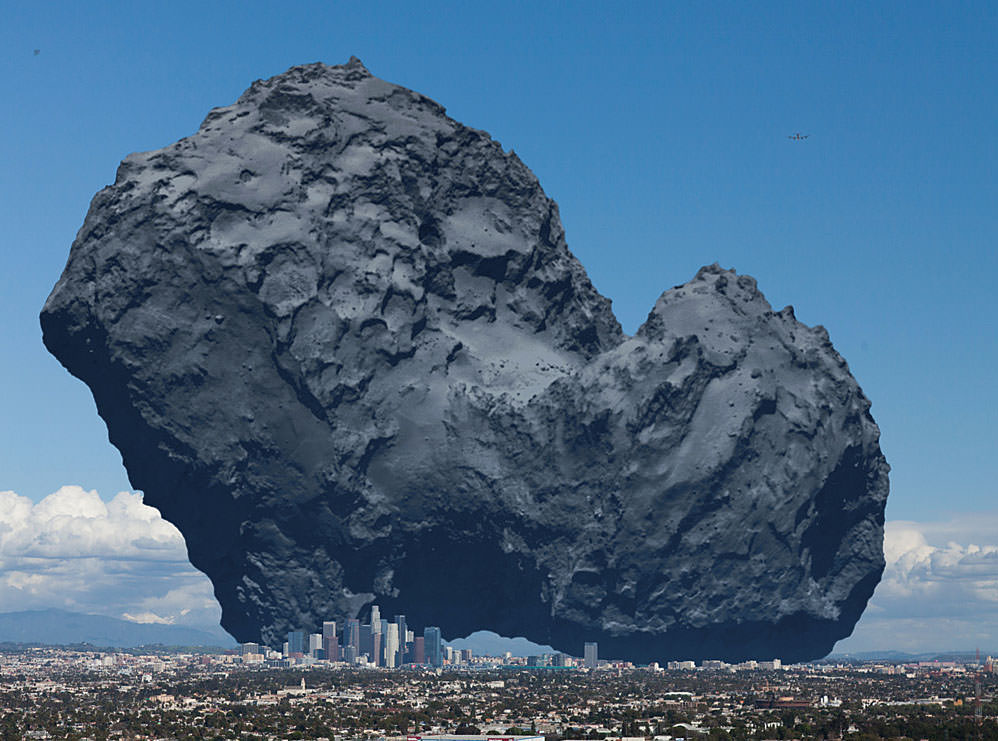All the pictures we’ve seen of Rosetta’s target comet 67P/C-G show it reflecting brightly against the background of outer space. And well they should. Space is black as night. But if we were to see the comet against a more familiar earthly backdrop, we’d be shocked by its appearance. Instead of icy white, Rosetta’s would appear the color of a fresh asphalt parking lot. Most comets, including Rosetta’s, are no brighter than the charcoal briquettes you use to grill hamburgers.
Astronomers rank an object’s reflectivity by its albedo (al-BEE-do). A body that reflects 100% of the light is said to have an albedo of 1.0. Venus’ albedo is .75 and reflects 75% of the light it receives from the sun, while the darker Earth’s average is 30%. Trees and the darker-toned continents reflect much less light compared to Venus’ pervasive cloud cover. In contrast, the coal-dark moon reflects only 12% of the sunlight falling on it and fresh asphalt just 4% – smack in the middle of the 2-6% range of most known comets.

The brightest object in the solar system is Saturn’s icy moon Enceladus with a reflectivity of 99%. So why are comets so dark? It’s funny because before we sent the Giotto spacecraft to snap close-up pictures of Halley’s Comet in 1986, astronomers thought comets, being made of reflective ice, were naturally white. Not Halley and not every comet seen up close since then.

Astronomers hypothesize that a comet grows a dark ‘skin’ both from accumulated dust and irradiation of its pristine ices by cosmic rays. Cosmic rays loosen oxygen atoms from water ice, freeing them to combine with simple carbon molecules present on comets to form larger, more complex and darker compounds resembling tars and crude oil.

Over time, the comet can become insulated by dust and complex organic materials. Combined with a loss of ice to vaporization at each repeated swing past the sun, they stop outgassing and become inert or defunct comets similar to asteroids. And that might not be the end of the story. Occasionally, a dead comet or an object originally discovered as an asteroid can unexpectedly fire back up after years of inactivity and become a comet again temporarily. Astronomers call these peculiar critters ‘damocloids’.
One wonders what you’d see if you could slice open a 67P/Churyumov-Gerasimenko. Would it resemble an Oreo cookie with a dark exterior and creamy white inside? One of NASA’s instruments aboard Rosetta named Alice began mapping the comet last month. In its first far ultraviolet spectra of the surface, we learned just this week that 67P is “darker than charcoal black”. Alice also detected hydrogen and oxygen in the comet’s coma, or atmosphere.

Rosetta scientists also discovered the comet’s surface so far shows no large water-ice patches. The team expected to see ice patches on the comet’s surface because it’s too far away for the sun’s warmth to turn its water into vapor.
“We’re a bit surprised at just how unreflective the comet’s surface is and how little evidence of exposed water-ice it shows,” said Alan Stern, Alice principal investigator at the Southwest Research Institute in Boulder, Colorado.
Hmmm … maybe it really is a giant cookie.


Love the comet vs. Los Angeles graphic. Definitely gives one a sense of perspective that’s hard to gather from just a photo of the comet alone. So too with lighting the briquette.
Thanks bugzzz!
Must be a “very dirty snowball”.